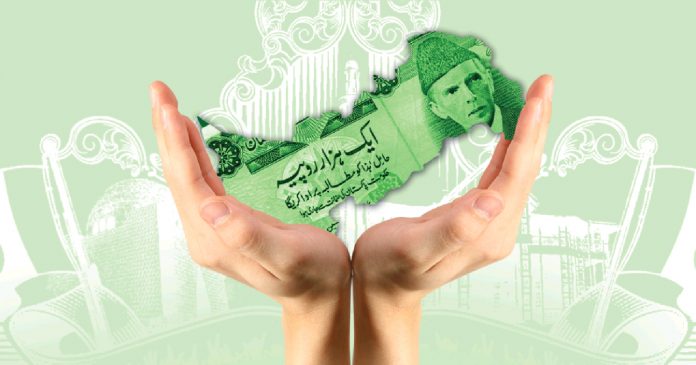The Annual Plan Coordination Committee (APCC) on Friday approved the national development outlay at Rs 2600 billion (2.6 trillion) for the upcoming fiscal year 2023-24 against the outlay of Rs 2184 billion set for the outgoing financial year.
The important forum has also approved outlay of Rs 1100 billion for federal Public Sector Development Program (PSDP). The provincial share in the development outlay would be Rs 1500 billion.
As per details, the proposed PSDP for 2023-24 aims to address socioeconomic challenges, recover the economy, and regain economic growth momentum. Ministries/Divisions initially demanded over Rs. 2.6 trillion for projects, but due to fiscal constraints, the essential requirement of funds was taken up with Finance. However, the provisional size of the PSDP was indicated at Rs. 700 billion, with an additional Rs. 200 billion through the PPP mode. Challenges faced during the formulation of the PSDP include rising throw-forward, additional demands, burden of provincial projects of devolved nature, SDGs and austerity measures.
Ministries/divisions were guided to prioritize core national projects, adhere to approved projects, fund projects with high expenditure for timely completion, prioritize federal projects over provincial projects, propose foreign-funded projects with adequate rupee cover, clear pending liabilities, and follow approved procedures for project financing. After adjustments and pre-APCC meetings, the proposed PSDP for 2023-24 was slightly adjusted, with allocations specified for different sectors.
The sector-wise summary of the proposed PSDP includes allocations for infrastructure, social sectors, special areas, merged districts, science & IT, governance, production sectors, ERRA, and others. The sectoral strategy and priorities for the PSDP include aligning with development frameworks, prioritizing the power sector, promoting industrial linkages and infrastructure modernization, conserving and augmenting water resources, focusing on social sectors, fostering innovation and research, balanced regional development, and launching development initiatives for backward/poor districts.
New initiatives for PSDP 2023-24 include projects related to floods, governance, social sectors, innovation, artificial intelligence, youth initiatives/internships, and regional balanced development. The proposed allocations for ministries/divisions, Pakistan Development Fund, and VGF for PPP/BOT projects are provided, along with the allocation for provincial ADPs. The Ministry of PD&SI has made efforts to accommodate ongoing and new development projects for timely completion and benefit to the people of Pakistan.
The Meeting of the Annual Plan Coordination Committee (APCC) was held under the chairmanship of the Minister for Planning, Development and Special Initiatives/Deputy Chairman (Chair), Planning Commission on Friday. Officials of Provincial Governments, State Bank of Pakistan and Federal Ministries/Divisions attended the meeting. The Chair informed the participants that APCC is a forum that is indicative of the government’s development and public investment plan for the prospective fiscal year.
Afterwards the Minister for Planning, Development and Special Initiatives highlighted that the government inherited an economy facing a number of challenges on external and internal fronts causing massive fiscal constraints. Therefore, he advised Provincial Governments and Federal Ministries/Divisions to use caution and efficiency in devising their development projects. He also informed participants that the Ministry of Planning, Development & Special Initiatives has worked out a 5Es strategy (Exports, E-Pakistan, Environment, Energy, Equity), which should serve as a guiding post for designing our development program. He added that Annual Plan 2023-24 and PSDP 2023-24 shall focus on prioritizing projects at advanced stage and token allocation should also be avoided.
Later, the Chief Economist apprised participants about economic performance achieved during fiscal year 2022-23 and growth projections for fiscal year 2023-24. He informed that the economy is expected to grow at 3.5% with sectoral growth of 3.5% in agriculture, 3.4% in industries and 3.6% in services.
As per the next year’s Annual Development Plan, the inflation rate would be brought down from 29.2 per cent to 21 per cent; the national savings to be increased from 12.5 per cent to 13.4 per cent, exports to be taken over $ 30 billion as compared to the current year’s projected $ 28 billion, $ 58.7 billion import projected for the next year and the trade deficit that currently stood at 1.1 per cent, to be brought down to -1.7 due to revival of the economy.
The Chief economist said that during 2022-23, due to high inflation, caused by unfavorable external environment, floods and import compression measures, only marginal economic growth was recorded. Lastly, he highlighted significant improvement in fiscal and current account balances, which he termed as a positive sign for revival of growth during 2023-24.
The Chief Economist presented an economic outlook for 2023-24, which he said shall result in orderly rebalancing between economic growth, current and fiscal account balances. However, he also raised cautions about global slowdown, increased interests in developed countries, and elevated commodity prices may hinder our economic plans.

























Later, the Chief Economist apprised participants about economic performance achieved during fiscal year 2022-23 and growth projections for fiscal year 2023-24.